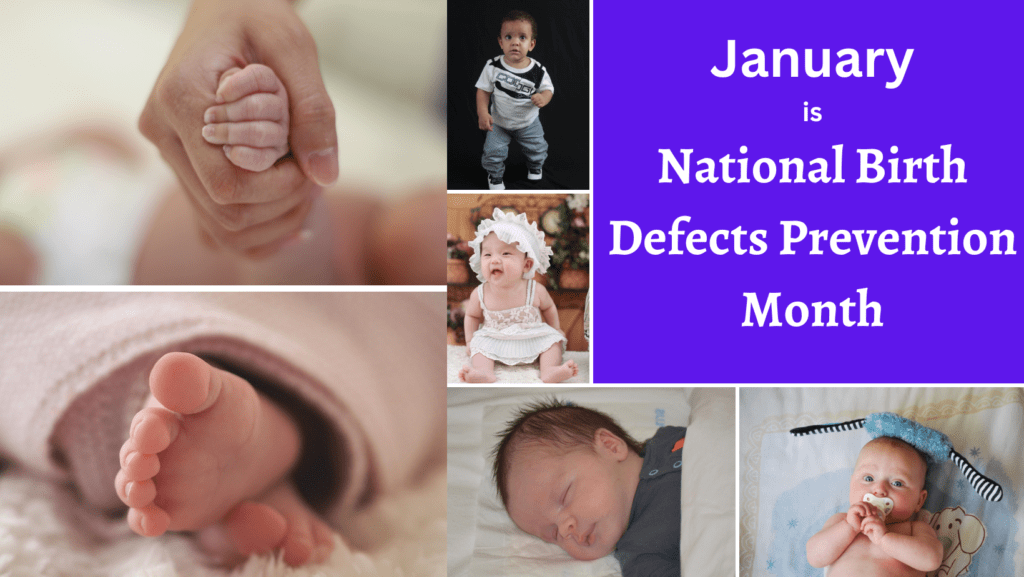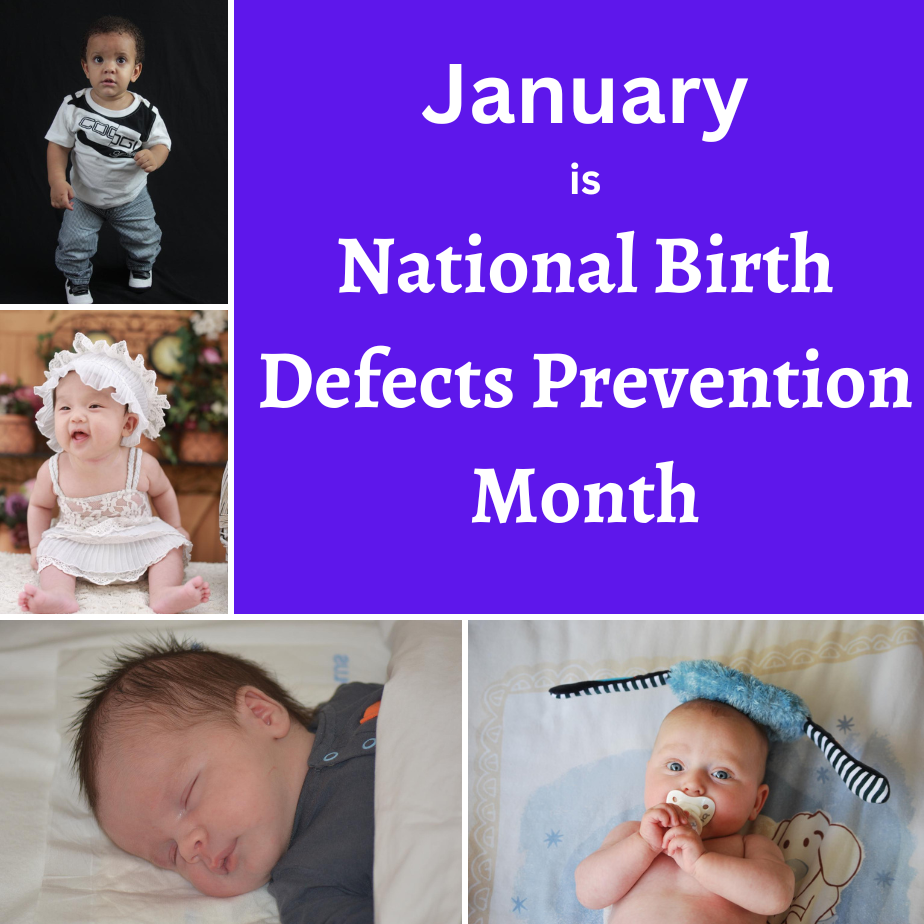
January is National Birth Defects Prevention Month, a time dedicated to providing information on birth defects, prevention or risk reduction, and where to seek help if you have concerns about birth defects.
The CDC estimates that 1 in 33 babies are born with a birth defect in the United States every year. Depending on the condition, the impacts of a birth defect can be severe and last throughout a child’s lifespan. Babies born with a birth defect often need treatment or special care to survive and do well developmentally. Early intervention is essential to improving the future well-being of these babies. If your child has a birth defect, you should ask your family doctor about local resources and treatment options.
Most Common Birth Defects

There are many different birth defects, according to CDC statistics, some of the most common are:
- Congenital Heart Defects – This describes any heart issue that impacts how the organ functions. Some heart defects involve specific parts of the organ such as the pulmonary valve, others affect how blood flows due to holes in the heart such as a ventricular septal defect.
- Hypospadias – This is a birth defect in boys in which the opening of the urethra is not located at the tip of the penis.
- Clubfoot – A foot abnormality in which the foot is turned inward. Clubfoot is the most common musculoskeletal birth defect occurring in an estimated 1 out of 593 births. In some cases bracing and or surgery may be needed to adjust the tendons, but clubfoot is often treated through gentle stretching and physical therapy.
- Down Syndrome – Occurs when there is an extra copy of chromosome 21. Also called Trisomy 21, Down Syndrome is the most common type of chromosomal abnormality. It can cause developmental challenges as well as physical deformities.
- Cleft Lip with Cleft Palate – These are birth defects that occur when a baby’s lip or mouth does not form properly during pregnancy, also called orofacial clefts. A cleft lip happens when the lip doesn’t join completely in during pregnancy. A cleft palate occurs when the tissue that makes up the roof of the mouth does not completely join together in utero.
Lowering the Risk

Birth defects can occur for numerous reasons. Though not all birth defects are preventable, there are measures expectant mothers can take to help reduce the risk of birth defects and deliver healthy babies.
- Get 400 mcg of Folic Acid each day through supplements or diet.
- Prevent Infections – Get all vaccinations recommended by your doctor.
- Don’t smoke cigarettes, use illegal drugs, or drink alcohol while pregnant.
- Check with your doctor before taking any medication.
- Manage your Diabetes – If you have Diabetes, take steps to keep it under control.
- Try to reach and maintain a healthy weight with a healthy diet and exercise.
- See your family doctor regularly
If you’re planning a pregnancy or even just considering it, talk to your doctor about steps you can take even before you are pregnant to help reduce birth defect risks. Looking for more information about birth defects but don’t know where to start? Check out CDC resources for people living with #BirthDefects #AcrosstheLifespan and their families at http://go.usa.gov/xeXAV
Seeing a healthcare provider regularly is important before and during pregnancy. Talk to your doctor about prenatal care, any medications you take, vaccinations you may need, and any other concerns you may have. Be sure to keep all of your prenatal care appointments, including telehealth appointments.
If you have concerns about your pregnancy or the risk of birth defects contact River Bend Medical Associates today. As part of your medical team, we look forward to providing you with the best in primary healthcare including prenatal care and pregnancy care. If you are pregnant or are planning to become pregnant and would like to speak with a doctor or nutritionist, call our family practice at 916-392-4000 for an appointment or contact River Bend Medical Associates.


